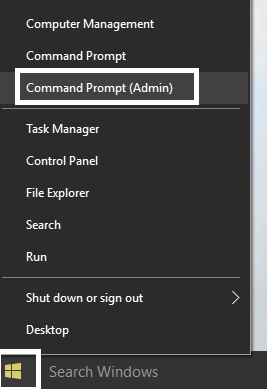Enable or Disable Credential Guard in Windows 10

Enable or Disable Credential Guard in Windows 10: Windows Credential Guard uses virtualization-based security to isolate secrets so that only privileged system software can access them. Unauthorized access to these secrets can lead to credential theft attacks, such as Pass-the-Hash or Pass-The-Ticket. Windows Credential Guard prevents these attacks by protecting NTLM password hashes, Kerberos Ticket Granting Tickets, and credentials stored by applications as domain credentials.
By enabling Windows Credential Guard the following features and solutions are provided:
Hardware security
Virtualization-based security
Better protection against advanced persistent threats
Now you know the importance of the Credential Guard, you should definitely enable this for your system. So without wasting any time let’s see How to Enable or Disable Credential Guard in Windows 10 with the help of the below-listed tutorial.
Enable or Disable Credential Guard in Windows 10
Make sure to create a restore point just in case something goes wrong.
Method 1: Enable or Disable Credential Guard in Windows 10 using Group Policy Editor
Note: This method only works if you have Windows Pro, Education, or Enterprise Edtion. For Windows Home version users skip this method and follow the next one.
1.Press Windows Key + R then type regedit and hit Enter to open Group Policy Editor.
2.Navigate to the following path:
Computer Configuration > Administrative Templates > System > Device Guard
3.Make sure to select Device Guard than in right window pane double-click on “Turn On Virtualization Based Security” policy.
4.In the Properties window of the above policy make sure to select Enabled.
5.Now from the “Select Platform Security Level” drop-down select Secure Boot or Secure Boot and DMA Protection.
6.Next, from “Credential Guard Configuration” drop-down select Enabled with UEFI lock. If you want to turn off Credential Guard remotely, choose Enabled without lock instead of Enabled with UEFI lock.
7.Once finished, click Apply followed by OK.
8.Reboot your PC to save changes.
Method 2: Enable or Disable Credential Guard in Windows 10 using Registry Editor
Credential Guard uses virtualization-based security features which have to be enabled first from Windows feature before you can enable or disable Credential Guard in Registry Editor. Make sure to only use one of the below-listed methods to enable virtualization-based security features.
Add the virtualization-based security features by using Programs and Features
1.Press Windows Key + R then type appwiz.cpl and hit Enter to open Program and Features.
2.From the left-hand window click on “Turn Windows Features on or off“.
3.Find and expand Hyper-V then similarly expand Hyper-V Platform.
4.Under Hyper-V Platform checkmark “Hyper-V Hypervisor“.
5.Now scroll down and checkmark “Isolated User Mode” and click OK.
Add the virtualization-based security features to an offline image by using DISM
1.Press Windows Key + X then select Command Prompt (Admin).
2.Type the following command into cmd to add the Hyper-V Hypervisor and hit Enter:
dism /image:<WIM file name> /Enable-Feature /FeatureName:Microsoft-Hyper-V-Hypervisor /all OR dism /Online /Enable-Feature:Microsoft-Hyper-V /All
3.Add the Isolated User Mode feature by running the following command:
dism /image:<WIM file name> /Enable-Feature /FeatureName:IsolatedUserMode OR dism /Online /Enable-Feature /FeatureName:IsolatedUserMode
4.Once finished, you can close the command prompt.
Enable or Disable Credential Guard in Windows 10
1.Press Windows Key + R then type regedit and hit Enter to open Registry Editor.
2.Navigate to the following registry key:
HKEY_LOCAL_MACHINESystemCurrentControlSetControlDeviceGuard
3.Right-click on DeviceGuard then select New > DWORD (32-bit) Value.
4.Name this newly created DWORD as EnableVirtualizationBasedSecurity and hit Enter.
5.Double-click on EnableVirtualizationBasedSecurity DWORD then change its value to:
To Enable Virtualization-based Security: 1
To Disable Virtualization-based Security: 0
6.Now again right-click on DeviceGuard then select New > DWORD (32-bit) Value and name this DWORD as RequirePlatformSecurityFeatures then hit Enter.
7.Double-click on RequirePlatformSecurityFeatures DWORD and change it’s value to 1 to use Secure Boot only or set it to 3 to use Secure Boot and DMA protection.
8.Now navigate to the following registry key:
HKEY_LOCAL_MACHINESystemCurrentControlSetControlLSA
9.Right-click on LSA then select New > DWORD (32-bit) Value then name this DWORD as LsaCfgFlags and hit Enter.
10.Double-click on LsaCfgFlags DWORD and change its value according to:
Disable Credential Guard: 0
Enable Credential Guard with UEFI lock: 1
Enable Credential Guard without lock: 2
11.Once finished, close Registry Editor.
Disable Credential Guard in Windows 10
If Credential Guard was enabled without UEFI Lock then you can Disable Windows Credential Guard using the Device Guard and Credential Guard hardware readiness tool or the following method:
1.Press Windows Key + R then type regedit and hit Enter to open Registry Editor.
2.Navigate and delete the following registry keys:
HKEY_LOCAL_MACHINESystemCurrentControlSetControlLSALsaCfgFlags HKEY_LOCAL_MACHINESoftwarePoliciesMicrosoftWindowsDeviceGuardEnableVirtualizationBasedSecurity HKEY_LOCAL_MACHINESoftwarePoliciesMicrosoftWindowsDeviceGuardRequirePlatformSecurityFeatures
3.Delete the Windows Credential Guard EFI variables by using bcdedit. Press Windows Key + X then select Command Prompt (Admin).
4.Type the following command into cmd and hit Enter:
mountvol X: /s
copy %WINDIR%System32SecConfig.efi X:EFIMicrosoftBootSecConfig.efi /Y
bcdedit /create {0cb3b571-2f2e-4343-a879-d86a476d7215} /d "DebugTool" /application osloader
bcdedit /set {0cb3b571-2f2e-4343-a879-d86a476d7215} path "EFIMicrosoftBootSecConfig.efi"
bcdedit /set {bootmgr} bootsequence {0cb3b571-2f2e-4343-a879-d86a476d7215}
bcdedit /set {0cb3b571-2f2e-4343-a879-d86a476d7215} loadoptions DISABLE-LSA-ISO
bcdedit /set {0cb3b571-2f2e-4343-a879-d86a476d7215} device partition=X:
mountvol X: /d
5.Once finished, close command prompt and reboot your PC.
6.Accept the prompt to disable Windows Credential Guard.
Recommended:
That’s it you have successfully learned How to Enable or Disable Credential Guard in Windows 10 but if you still have any queries regarding this tutorial then feel free to ask them in the comment’s section.

















